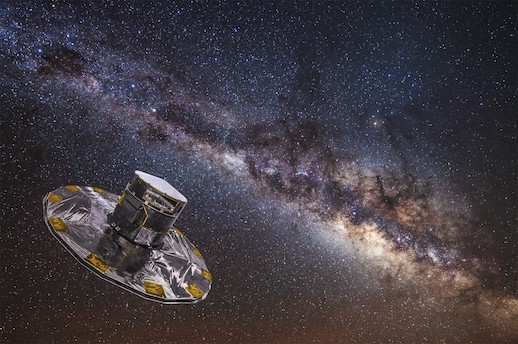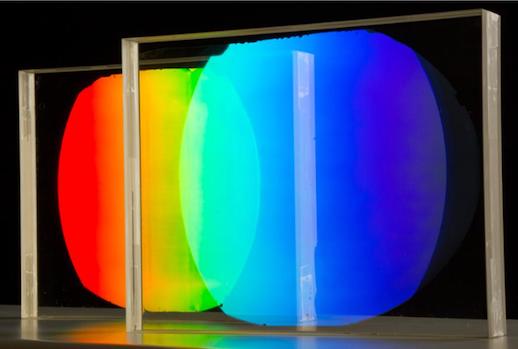
News from ORP
by ORP Executive Management Team
OPTICON RadioNet Pilot (ORP) is one of the European Commission's 'pilot' programs under EC H2020, launched in March 2021. This four-year project brings together 37 institutions to support and develop seamless access to radio and optical facilities. Through various processes, ORP brings together radio and optical astronomers to create a stronger community to better exploit the opportunities of multi-wavelength science and to benefit from each other's expertise.
Several members of the ORP community took the opportunity to meet at the EAS 2022 in Valencia, Spain, during the special session "European Forum of Astronomical Communities'' held on 30 June 2022. The session was chaired by prof. Lukasz Wyrzykowski (UNIWARSAW) and aimed to discuss the development of underrepresented astronomy communities in Europe and to present the current opportunities for researchers within Europe. The ORP communities were strongly represented. The coordinator - Stéphane Basa (CNRS) took the chance to shed light on the Pilot structure and objectives and Agnieszka Słowikowska (UMK), as Chair of the ORP Board, introduced the results of the 1st year across all activities. Activities of JA1, and VLTI as well as TDA were honoured by separate talks.
As part of the strategic development, the ORP supports major efforts to protect Dark and Quiet Skies for future astronomical observations, which recently launched a questionnaire about the capabilities of ORP stations to measure EMI, targeting interested observatories. The results will contribute in the definition of possible actions, such as initiatives to streamline RFI detection by the Committee on Radio Astronomy Frequencies (CRAF) and tools to localise LEO satellites. Please contribute to it by completing the questionnaire.
Providing Transnational and Virtual Access to observatories and nodes around the world is in the foundations of ORP. For the optical and infrared telescopes and networks of telescopes, a Common Time Allocation Committee (CTAC) allocates the time across infrastructures based on scientific merit. Since the project began, 81 projects have been supported. The call for observing time during the semester 2023 A at optical telescopes supported by the ORP Trans-National Access programme closed on 31 August 2022. All information is available here. The ORP portfolio of radio infrastructures consists of four arrays (among them the European VLBI Network), the four world-class single dish telescopes , the European ARC nodes, and virtual access to the archives of LOFAR and WSRT. Since the beginning of the project, more than 2,300 observing hours have been provided for 119 projects made by more than 740 users and additionally 7 ALMA projects (218 users) have been supported by ARCs. All the calls are published on the ORP website.

Credit: ESA/ATG medialab; background: ESO/S. Brunier.
The access to state-of-the-art equipment and infrastructures contributes to scientific excellence and discoveries. Indeed, on 13 June 2022, Gaia, ESA’s mission to create the most accurate map of the Milky Way, released its third full data set (DR3). The network of telescopes coordinated by the ORP plays an important role in providing follow-up observations of Gaia alerts. Moreover, ORP's BHTOM plays a key role in collecting crucial observations, which will be used together with the next Gaia data releases.
In parallel, ORP is leading the adoption of a set of common principles and tools to enable all scientists and researchers to have simplified and improved access to ORP facilities. A prototype TOM module for the radio astronomical infrastructures and a backend server to handle requests were developed. The local TOM installation was set up with the prototype module and a dummy target has been created to do testing. A work plan for the next ten months was discussed to develop dedicated AEON protocols for new optical and radio facilities in order to enable integration to the automated scheduling in the TDA-CCS. Many new users were introduced and educated during the BHTOM-PL Astronomical Workshop that took place in Poland in April 2022. The number of telescopes connected to the BHTOM as well as the number of FITS science data files contained therein is increasing rapidly. To broaden participation in the development of common tools, a survey to assess the needs of users of optical, radio telescopes and arrays is being carried and accessible here. Please contribute to it by completing the short (~3-min) questionnaire. It aims to even better define various services to aid scientific users and facilities. All responses are anonymous.
The Conference 'Sharpest Eyes on the Sky' held on 25-29 April 2022, at the University of Exeter (UK), brought together interferometry communities to encourage cross-facility collaboration. The event gathered more than 120 participants in Exeter and online, and welcomed 85 presentations on protoplanetary discs, stellar astrophysics, exoplanets, AGNs, and a public talk on the exploration of the Galactic Centre delivered by Dr Frank Eisenhauer. It provided an overview about available tools, instruments, and the support structure provided through the VLTI Expertise Centre nodes.

ORP also contributes to improving key infrastructure services through targeted technical developments. On a more technical level, some technological activities are carried out on Optimising dispersive elements – Volume Phase Holographic Gratings, which is devoted to the development of VPHG dispersive elements to improve the observing capabilities of the facilities available to the Pilot community. A dedicated page is available here.
The training events are also being scheduled for users in the radio and optical fields. The European Adaptive Optics School took place on 13-17 June 2022 and welcomed 65 students who wanted to increase their skills in Adaptive Optics. The next ORP training event will be the 9th European Radio Interferometry School (ERIS 2022), which will be hosted by JIVE and ASTRON in Dwingeloo (the Netherlands) on 19 - 23 September 2022 (registration closed). The 2022 NEON Observing School will take place at the Observatoire de Haute-Provence in France on 2-15 October 2022 (application closed). The 11th IRAM millimetre interferometry School, will take place at the IRAM headquarters in Grenoble (France) on 21-25 November 2022 (registration open until 1 September 2022).
For more information, please visit the ORP website, follow us on Twitter and subscribe to the ORP newsletter.